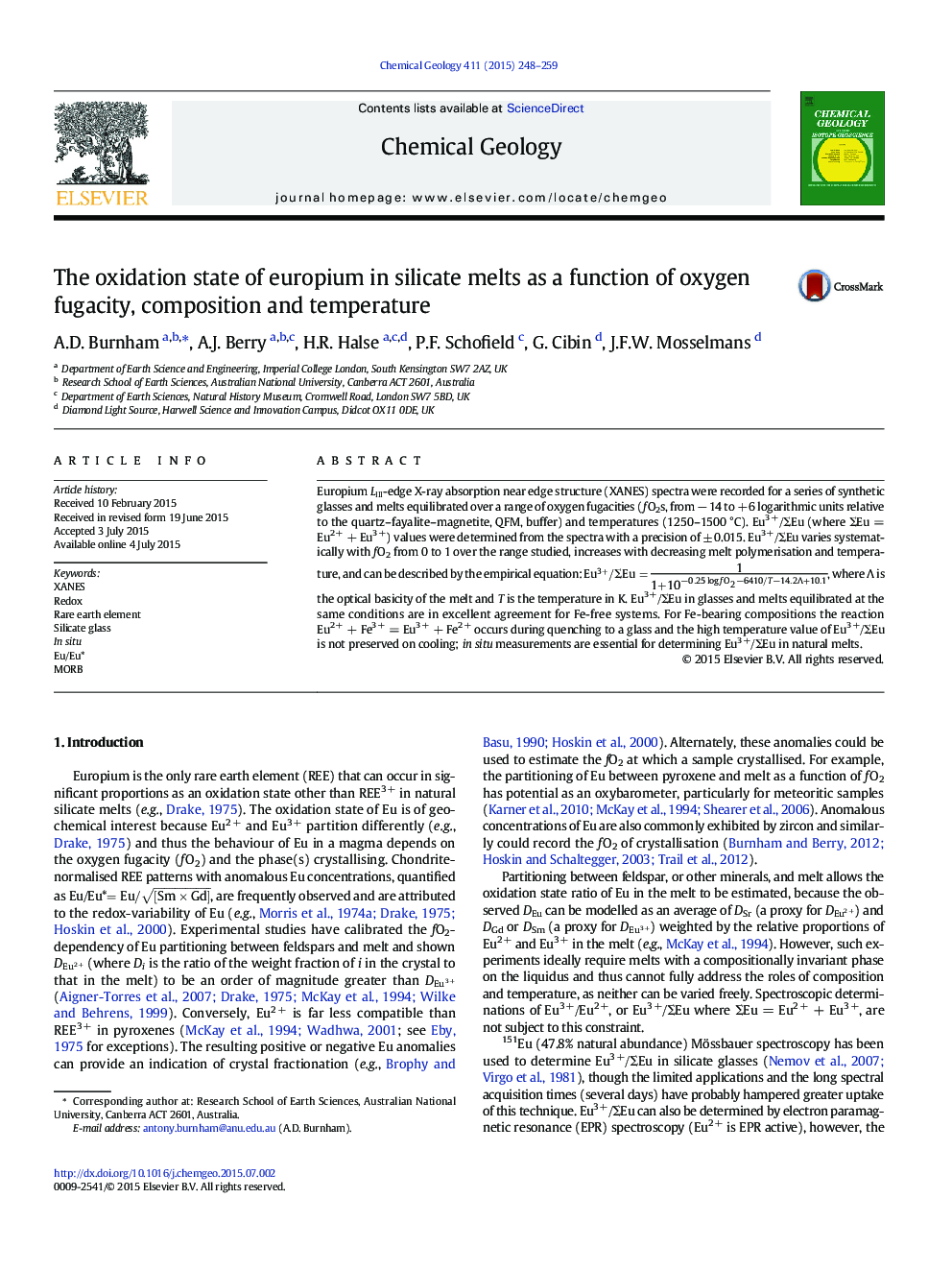| Article ID | Journal | Published Year | Pages | File Type |
|---|---|---|---|---|
| 6436346 | Chemical Geology | 2015 | 12 Pages |
â¢Eu3 +/Eu2 + in melts can be predicted using an empirical equation.â¢Eu3 +/Eu2 + in a natural melt is not preserved on quenching to a glass.â¢Eu2 + + Fe3 + = Eu3 + + Fe2 +.
Europium LIII-edge X-ray absorption near edge structure (XANES) spectra were recorded for a series of synthetic glasses and melts equilibrated over a range of oxygen fugacities ( f O2s, from â 14 to + 6 logarithmic units relative to the quartz-fayalite-magnetite, QFM, buffer) and temperatures (1250-1500 °C). Eu3 +/ΣEu (where ΣEu = Eu2 + + Eu3 +) values were determined from the spectra with a precision of ± 0.015. Eu3 +/ΣEu varies systematically with f O2 from 0 to 1 over the range studied, increases with decreasing melt polymerisation and temperature, and can be described by the empirical equation: Eu3+/ΣEu=11+10â0.25logfO2â6410/Tâ14.2Î+10.1, where Î is the optical basicity of the melt and T is the temperature in K. Eu3 +/ΣEu in glasses and melts equilibrated at the same conditions are in excellent agreement for Fe-free systems. For Fe-bearing compositions the reaction Eu2 + + Fe3 + = Eu3 + + Fe2 + occurs during quenching to a glass and the high temperature value of Eu3 +/ΣEu is not preserved on cooling; in situ measurements are essential for determining Eu3 +/ΣEu in natural melts.
